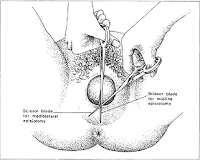Since moving here I have had a couple failed attempts to do some birth networking. It is very slow-going. I did meet a couple doulas at a maternal and child health meeting, which was nice, but they told me there was no nice doula network in Tampa because although there were many doulas, they are apparently quite divided (home birth only/extremely anti medical vs supportive of hospital/medical options). But thanks to the wonders of the internet, I met a really great local doula through our blogs! She followed my blog and when I checked out hers I realized she was local and we decided to connect in real life!
She invited me to attend a weekly prenatal class given by a nearby pregnancy help center. It is a small weekly class that is given for free to women no matter what age they are or what number pregnancy or child they are having. She and I had a really great time getting to know one another, and it was so fun to just babble on about birth and breastfeeding with someone who shared my interests! The class was also really great - it is so interesting to see what is being taught to (what I interpreted as) low income, mostly minority pregnant women and how it is discussed. The discussion was great and I loved listening to what everyone had to say. The women all had diverse experiences and input. We learned mainly about nutrition during pregnancy, and then we had a nutritious dinner together. I had a great time and I got to hold an adorable fat baby!
If you are reading this, my new doula friend, hello! :)
In addition to the above, I also attended a really great maternal and child health symposium at my college of public health with really awesome and diverse speakers. The main topic tended to be preterm birth prevention and the role of obstetrical management in the late preterm period.
Some things I learned which I will share with you -
- The Big 5 states (Florida, Texas, Illinois, New York and California) account for 38% of births and 40% of total Cesarean sections in the country.
- There is a huge initiative to reduce elective deliveries before 39 weeks at hospital, health system and statewide levels. Past and current initiatives have been shown to be create effective change if physicians are held accountable, nurses were empowered and guidelines were enforced.
- Why are non-medically indicated (elective/planned) deliveries increasing in frequency?
- advanced planning
- mother lives far away and/or has a history of quick labors
- wants baby delivered by her doctor and no one else
- maternal intolerance to late pregnancy (ie backache, indigestion, insomnia)
- prior bad pregnancy/birth outcome (ie stillbirth)
- and...
- Women's birth perceptions regarding the safety of births at various gestational ages - study found that majority of women think that baby is at term after 37 weeks (ITS NOT!!) and many thought that even after 35 weeks it was OK
- Ultrasound for measuring the baby's weight can be 1-1.5 lbs off
- Inducing early does not lower risk of macrosomia, preeclampsia, or lower stillbirth rates
- Fear with macrosomia is shoulder dystocia - early induction does not reduce risk of shoulder dystocia
- Complications of Non-medically indicated deliveries between 37 and 39 weeks:
- increased NICU admissions
- increased transient tachypnea of the newborn
- increased respiratory distress syndrome
- increased ventilator support
- increased suspected of proven sepsis
- increased newborn feeding problems and other transition issues
- Morbidity rates double for each gestational week earlier than 38 weeks
- Timing of Fetal Brain Development: cortex volume increases by 50% between 34 and 40 weeks gestation, brain volume increases at a rate of 15mL/week between 29 and 40 weeks gestation
- A baby's brain at 35 weeks weights only 2/3 of what it will weigh at 39-40 weeks.
It is just great to be in a room where everyone is discussing things like "episiotomy rates in primips" and so forth. It all made me really excited to be both studying and working for better births.
It feels awesome to be back in academia, and back in the world of birth!














